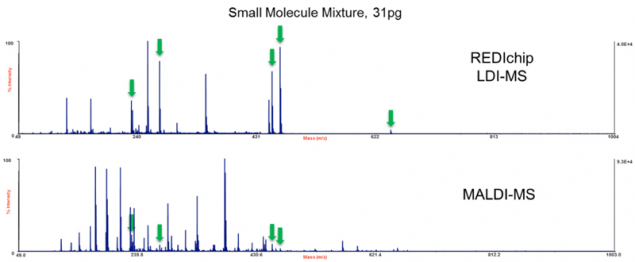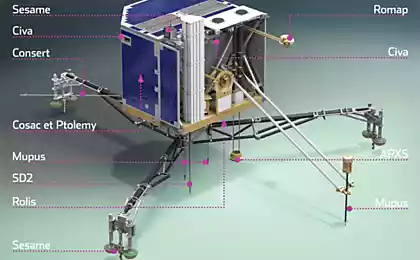934
The future: identification of people by smell

Chemistry professor Akos Vertes holding a semiconductor wafer with chips REDIchip. I> Photo: George Washington University
As is known, some dogs and other animals are able to distinguish between people smell. Dogs can even distinguish the smell of identical twins with identical genomes, it seems quite incredible (although fingerprints they too are slightly different).
People use dogs as a "biological sensors" to track down missing people abandon smell to search for drugs and so on.. But if the new development chemists from George Washington University will be developed and perfected, the ability of the dogs will be put into a computer microchip. And then opening up before us completely new opportunities, not only in medicine, security, identification, surveillance cameras and explosive detectors, but also in computer games and mobile applications for smart phones, which will build these sensors.
Imagine that on your smartphone you can see the chemical trail left by a specific person are passed. Or heat map of his movements around the house. The car instantly detects approaching the owner and include ignition. Home alarm system is switched off when approaching the owner and he opens the door, at the same time immediately reacting to strangers. On the hunt, you can immediately see when and where a person or an animal has passed (depending on whom hunting). In general, the new possibilities of technology are truly endless.
Professor of Chemistry at Columbia College of Arts and Sciences at the George Washington University Akos Vertes (Akos Vertes) has developed a new technology that is able to detect traces of chemicals at 10 -19 sup> mol, which is impossible for any of the existing sensors.
The technology used to create the microchip REDIchip (Resonance-Enhanced Desorption Ionization). As the name implies, it uses the method of resonance-enhanced ионизации desorption method , which reduces the time and the amount of material needed to determine the biological or chemical material.
The technology has already been patented, and the development of microchips engaged in a commercial company Protea. The finished product will be available in July 2015, they promise. Assistance in funding research to provide military agency DARPA and the US Department of Energy.



On the official website REDIchip are some specifications of the microchip 96 records for analysis, the size of 25 x 75 x 1 mm, 2 mm working area.
The diagram shows that the mass spectrometer REDIchip's NAPA LDI-MS provides a clear recognition of small molecule drugs and verapamil ropivokaina significantly reduces background noise, as compared with a conventional mass spectrometer MALDI-MS.

Comparison of two mass spectrometers in a mixture of complex small molecules containing clonidine (230) ropivokain (275), verapamil 455), buprenorphine (468) and amiodarone (646).

Apparently, this is the most accurate compact mass spectrometer on the market.
Source: geektimes.ru/post/252296/
Professions of the future in the social sphere
The dream to live near the sea will carry out house of the future























